Frank Bergon | |
|---|---|
 Frank Bergon in West Tisbury, 2019 |
Frank Bergon (born 1943) is an American writer whose novels, essays, anthologies, and literary criticism focus primarily on the American West. [1]
Frank Bergon | |
|---|---|
 Frank Bergon in West Tisbury, 2019 |
Frank Bergon (born 1943) is an American writer whose novels, essays, anthologies, and literary criticism focus primarily on the American West. [1]
Frank Bergon was born in Ely, Nevada, and grew up on a ranch in Madera County in California's San Joaquin Valley. [2] After attending elementary school at St. Joachim in Madera, California and high school at Bellarmine College Preparatory in San Jose, he received a B.A. in English at Boston College, attended Stanford University as a Wallace Stegner Fellow, and completed a Ph.D. in English and American Literature at Harvard University. [3] [4]
Bergon has published twelve books—four novels, a critical study of Stephen Crane, five edited collections and anthologies, and most recently two books of essays. A major concern of his work is with the lives of Basque Americans in the West. [5] His writing about Native Americans ranges from the Shoshone of Nevada [6] to the Maya of Chiapas, Mexico. [7]
His Nevada trilogy consists of three novels spanning a century from the Shoshone massacre of 1911 (Shoshone Mike), [8] to the shooting of Fish and Game officers by the self-styled mountain man Claude Dallas (Wild Game), [9] to the current battle over nuclear waste in the Nevada desert (The Temptations of St. Ed & Brother S). [10]
Bergon's California trilogy, consisting of, Jesse's Ghost, Two-Buck Chuck & The Marlboro Man: The New Old West and The Toughest Kid We Knew: The Old New West: A Personal History, all focus on the San Joaquin Valley, and his Basque-Béarnais heritage. His writing was the subject of a 2019 conference and 2020 book by scholars and writers from the U.S. and the Basque Country: Visions of a Basque American Western: International Perspectives on the Writings of Frank Bergon. [11] The trilogy also draws attention to today's sons and daughters of the California Okies portrayed in Steinbeck's The Grapes of Wrath . Jesse's Ghost was selected in 2024 for The New York Times "Best Books About California." [12]
He also writes about the natural history and environment of the American West in both fiction [13] and non-fiction, such as in The Journals of Lewis and Clark . [14]
With his wife, Holly St. John Bergon, he has published translations of the Spanish poets Antonio Gamaneda, José Ovejero, Xavier Queipo, and Violeta C. Rangel in New European Poets [15] and The European Constitution in Verse. [16]
Bergon has taught at the University of Washington and for many years at Vassar College, where he is Professor Emeritus of English. [17] In 1998, Bergon was inducted into the Nevada Writers Hall of Fame. [18] [19] In 2024, he was included into the Bellarmine Hall of Fame. [20]
Guns and Grammar, or How to Read the Second Amendment published in The Los Angeles Review of Books humorously but devastatingly makes that case that an incorrect textual reading of the Second Amendment by Supreme Court Justice Antonin Scalia starts, and continues to cause, disastrous rulings on U.S. gun laws. [21]
I Understand Thee, and Can Speak Thy Tongue: California Unlocks Shakespeare's Gibberish published in the Los Angeles Review of Books links what has been regarded as gibberish in Shakespeare to the Basque language. [22]

Madera is a city and county seat of Madera County, located in the San Joaquin Valley of California. As of the 2020 United States census, the city's population was 66,224.
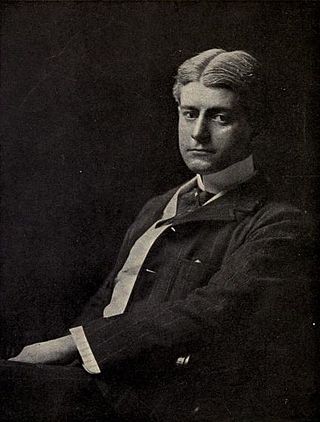
Benjamin Franklin Norris Jr. was an American journalist and novelist during the Progressive Era, whose fiction was predominantly in the naturalist genre. His notable works include McTeague: A Story of San Francisco (1899), The Octopus: A Story of California (1901) and The Pit (1903).
The Shoshone or Shoshoni are a Native American tribe with four large cultural/linguistic divisions:

Bellarmine College Preparatory is an all-boys, Jesuit, private secondary school located in San Jose, California. Founded on May 8, 1851, it is the oldest Jesuit secondary school in California and the second-oldest west of the Mississippi River.

Robert Laxalt was a Basque-American writer from Nevada.
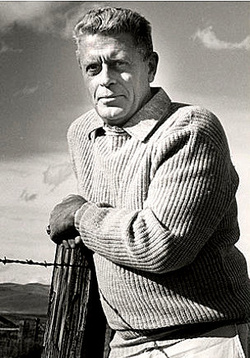
Walter Van Tilburg Clark was an American novelist, short story writer, poet, and educator. He ranks as one of Nevada's most distinguished literary figures of the 20th century, and was the first inductee into the 'Nevada Writers Hall of Fame' in 1988, together with Robert Laxalt, Clark's mentee and Nevada's other heralded twentieth century author. Two of Clark's novels, The Ox-Bow Incident and The Track of the Cat, were made into films. As a writer, Clark taught himself to use the familiar materials of the western saga to explore the human psyche and to raise deep philosophical issues.

William Wright (1829–1898), better known by the pen name Dan DeQuille or Dan De Quille, was an American author, journalist, and humorist. He was best known for his written accounts of the people, events, and silver mining operations on the Comstock Lode at Virginia City, Nevada, including his non-fiction book History of the Big Bonanza.
Gerald William Haslam was an author focused on rural and small towns in California's Great Central Valley including its poor and working-class people of all colors. A native of Oildale, California, Haslam has received numerous literary awards.

Thomas Nicholas Meschery is an American former professional basketball player. Born in China, Meschery was a power forward with a 10-year National Basketball Association career from 1961 to 1971. He played for the Philadelphia/San Francisco Warriors and the Seattle SuperSonics. He played in the 1963 NBA All-Star Game, making him the first foreign-born NBA player to be selected as an NBA All-Star. The Warriors not only retired his number 14, but also gave him a unique honor by incorporating the number into the team's logo from 1967 to 1974.

Basque Americans are Americans of Basque descent. According to the 2000 US census, there are 57,793 Americans of full or partial Basque descent.

David Hickey was an American art critic who wrote for many American publications including Rolling Stone, ARTnews, Art in America, Artforum, Harper's Magazine, and Vanity Fair. He was nicknamed "The Bad Boy of Art Criticism" and "The Enfant Terrible of Art Criticism". He had been professor of English at the University of Nevada Las Vegas and distinguished professor of criticism for the MFA program in the Department of Art & Art History at the University of New Mexico.

Corbin Harney was an elder and spiritual leader of the Newe people. Harney reportedly inspired the creation in 1994 of the Shundahai Network, which works for environmental justice and nuclear disarmament. The Shundahai Network plays a key role in organizing non-violent civil disobedience aimed at bringing about the closure of the Nevada Test Site, used for testing nuclear weapons, which is located on Western Shoshone land.
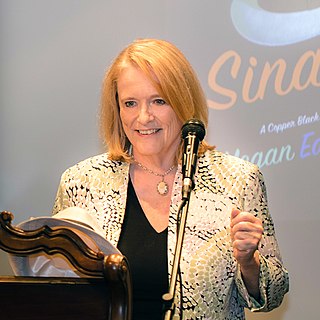
Megan Frances Edwards is an American writer and editor.
David Romtvedt is an American poet.
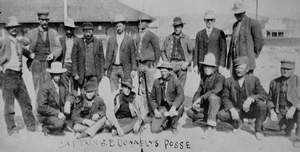
The Battle of Kelley Creek, also known as the Last Massacre, is often considered to be one of the last known massacres carried out between Native Americans and forces of the United States, and was a closing event to occur near the end of the American Indian warfare era. In January 1911 a small band of Shoshones were accused of rustling cattle and then killing four stockmen who went to investigate the dead cattle. A posse of policemen and citizens was sent to track the band, who were found encamped near Winnemucca, Nevada, in a region known as Kelley Creek. A largely one-sided battle ensued on February 25 that ended with the direct deaths of nine people, eight Daggetts and one posse member. At the time the affair was briefly characterized as a Native American revolt, though it is now mostly regarded as a family's attempted escape from law enforcement.
Mike Daggett, original Shoshoni name Ondongarte, was a Shoshone man who is best known for his involvement in the Battle of Kelley Creek, during which he was killed with several members of his family.

The Sagebrush School was the literary movement written primarily by men of Nevada. The sagebrush shrub is prevalent in the state. It was a broad-based movement as it included various literary genres such as drama, essays, fiction, history, humor, journalism, memoirs, and poetry. The name Sagebrush School was coined by Ella Sterling Mighels, who stated:
Sagebrush school? Why not? Nothing in all our Western literature so distinctly savors of the soil as the characteristic books written by the men of Nevada and that interior part of the State where the sagebrush grows.

Claire Vaye Watkins is an American author and academic.

Idah Meacham Strobridge was an American writer and bookbinder. Known primarily for a trio of works about the Great Basin which mix folktales, fiction, sketches, and nature writing: In Miners' Mirage-Land (1904), The Loom of the Desert (1907) and The Land of Purple Shadows (1909).
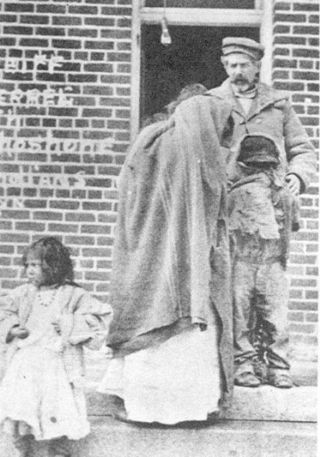
Mary Josephine Estep was a Shoshone child survivor of the Battle of Kelley Creek, "the last massacre" of Native Americans in the United States, in 1911.